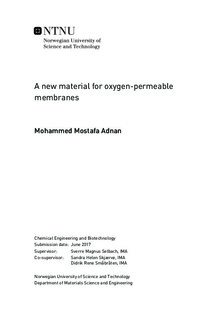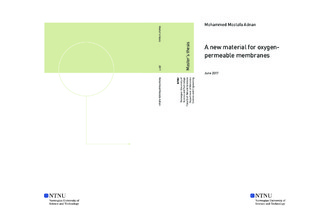| dc.description.abstract | In this study, hexagonal YMnO3 doped with 15% Ti was used in the preparation of an asymmetric oxygen permeable membrane. Several different methods for the fabrication of the asymmetric membrane have been used, and the crystal structure and microstructure of the prepared membranes were investigated. Successful doping of hexagonal YMnO3 with Ti resulted in changes in the lattice parameters, which were calculated by Pawley refinements; these have contributed to reducing anisotropy in the material, and a stabilization of the high-symmetry phase. This indicates that the material will have greater resistance to microcracking and also have improved oxygen storage capacity.
The support of the asymmetric membrane was prepared using solid state synthesis, and was found to be suitably porous when prepared using a pore former. Nanocrystalline YMn0.85Ti0.15O3 and Y0.98Mn0.85Ti0.15O3 prepared by citric acid synthesis was used for film deposition; dilatometry indicated that the yttrium-deficient composition has better sintering capability. Three methods were used to deposit a dense, thin film onto the supports: drop casting was unsuccessful due to the low solid load of suspension used; dip coating showed limited success due to requiring multiple depositions. A combination of dip coating and drop casting using higher solid loads (0.8-1 vol%) resulted in successful and consistent formation of a dense film. The density of the films was seen to improve significantly when sintered at 1480°C. Reduction of the deposition volume and decreasing the drying rate resulted in reduced film shrinkage after deposition. Cracks were present in the film surface due to stresses from the film shrinkage and thermal shock; the
use of a slower cooling rate after sintering resulted in fewer cracks, but promoted significant grain growth. The film thickness was found to be between 30-50 µm after two depositions using the combined method.
The combined method appears to be the most successful at consistently forming a dense and sufficiently thin film. Future investigations should attempt to optimize the method and reduce film thickness, while ensuring sufficient coverage over the support surface. The membranes should be tested to check if the film blocks gas flow; in that case, the oxygen permeation flux through the membrane must be measured and investigated over a range of temperatures. This will determine the potential of Ti-doped YMnO3 for use in oxygen permeable membranes. | |

